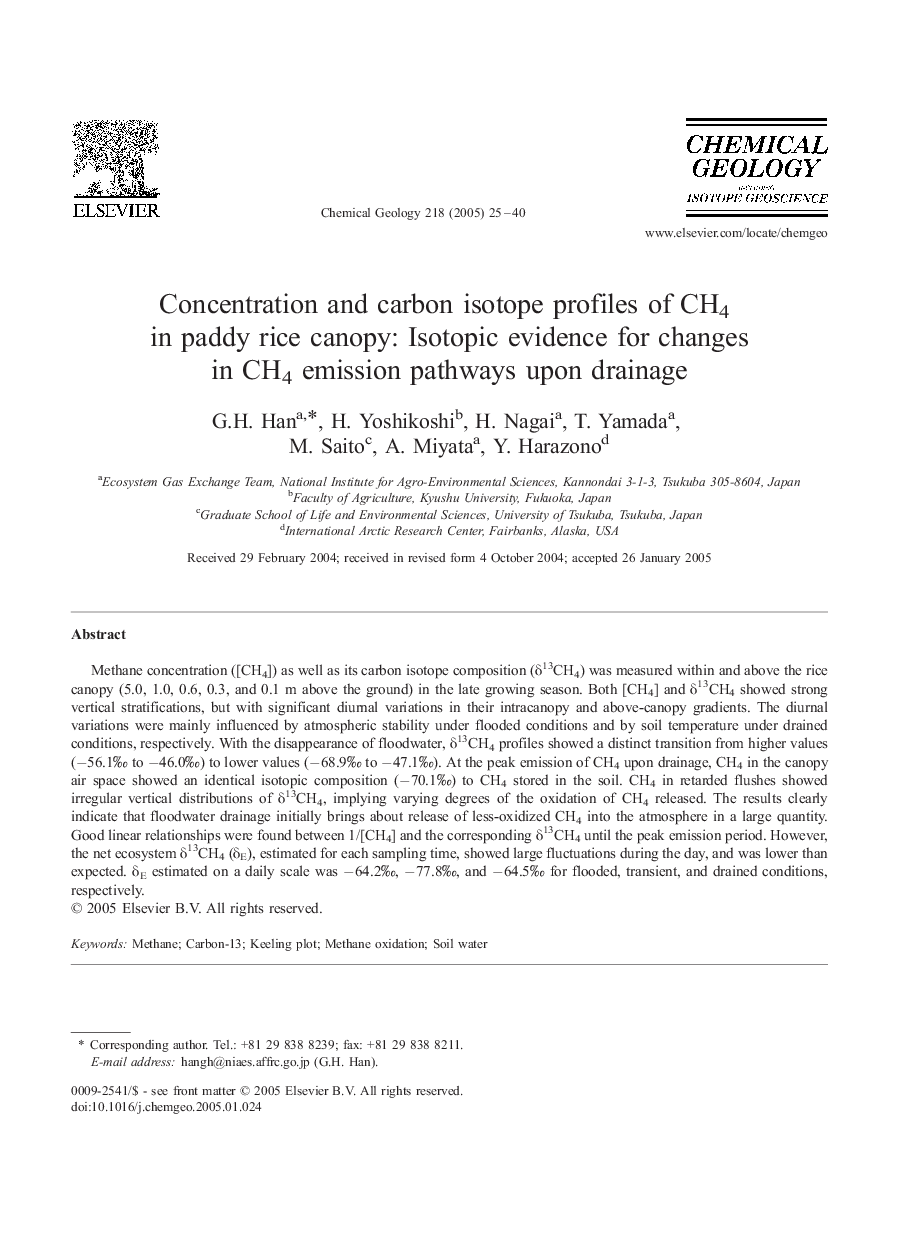| Article ID | Journal | Published Year | Pages | File Type |
|---|---|---|---|---|
| 9529039 | Chemical Geology | 2005 | 16 Pages |
Abstract
Methane concentration ([CH4]) as well as its carbon isotope composition (δ13CH4) was measured within and above the rice canopy (5.0, 1.0, 0.6, 0.3, and 0.1 m above the ground) in the late growing season. Both [CH4] and δ13CH4 showed strong vertical stratifications, but with significant diurnal variations in their intracanopy and above-canopy gradients. The diurnal variations were mainly influenced by atmospheric stability under flooded conditions and by soil temperature under drained conditions, respectively. With the disappearance of floodwater, δ13CH4 profiles showed a distinct transition from higher values (â56.1â° to â46.0â°) to lower values (â68.9â° to â47.1â°). At the peak emission of CH4 upon drainage, CH4 in the canopy air space showed an identical isotopic composition (â70.1â°) to CH4 stored in the soil. CH4 in retarded flushes showed irregular vertical distributions of δ13CH4, implying varying degrees of the oxidation of CH4 released. The results clearly indicate that floodwater drainage initially brings about release of less-oxidized CH4 into the atmosphere in a large quantity. Good linear relationships were found between 1/[CH4] and the corresponding δ13CH4 until the peak emission period. However, the net ecosystem δ13CH4 (δE), estimated for each sampling time, showed large fluctuations during the day, and was lower than expected. δE estimated on a daily scale was â64.2â°, â77.8â°, and â64.5â° for flooded, transient, and drained conditions, respectively.
Related Topics
Physical Sciences and Engineering
Earth and Planetary Sciences
Geochemistry and Petrology
Authors
G.H. Han, H. Yoshikoshi, H. Nagai, T. Yamada, M. Saito, A. Miyata, Y. Harazono,
